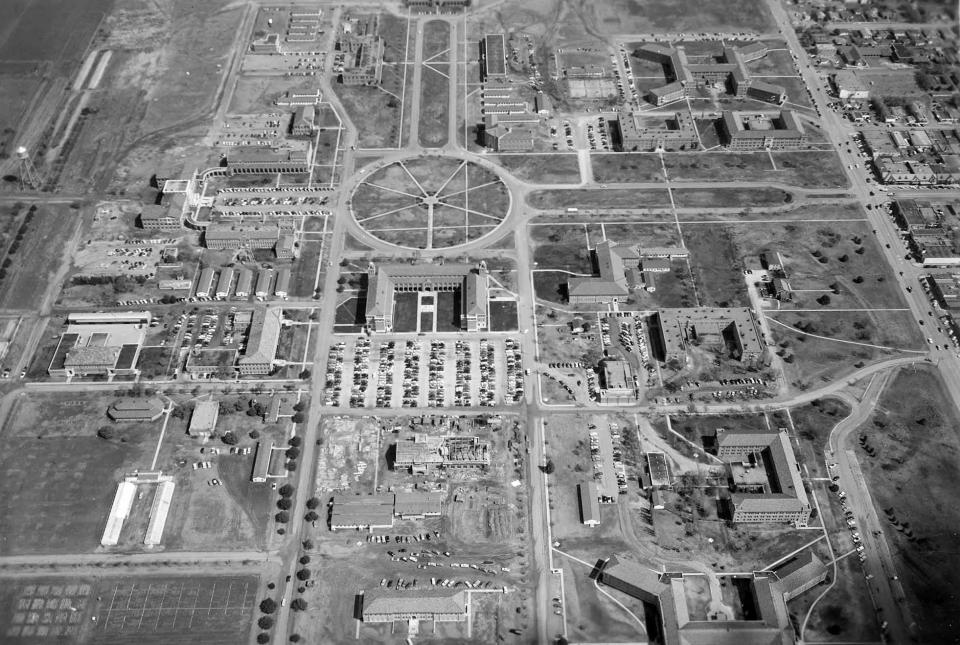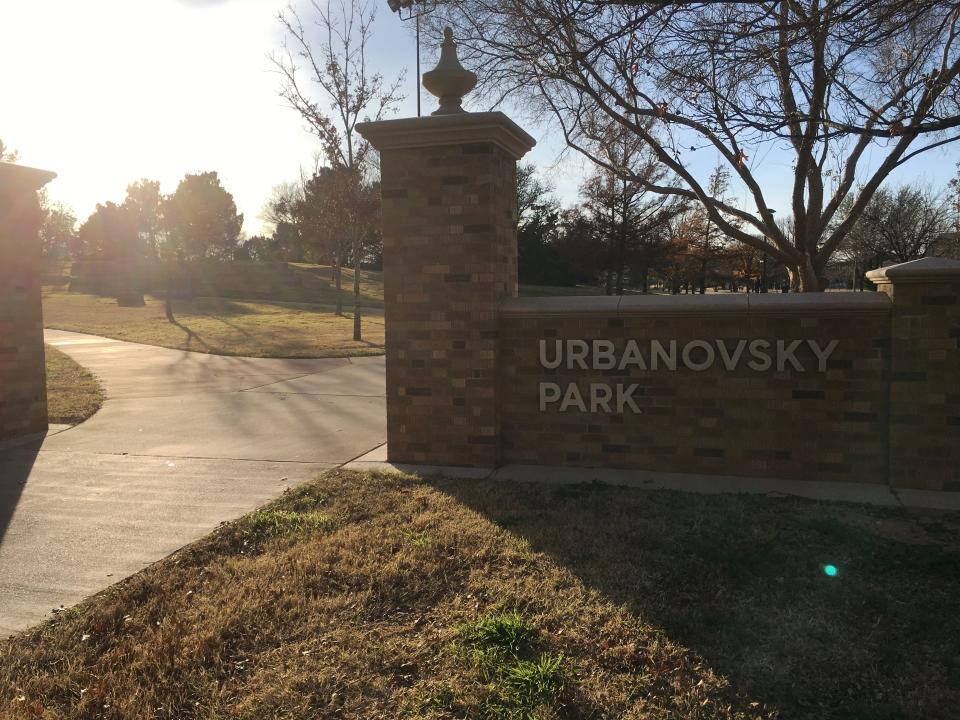Caprock Chronicles: Elo J. Urbanovsky: Early architect of the TTU campus
Editor’s Note: Jack Becker is the editor of Caprock Chronicles and is a Librarian Emeritus, Texas Tech Libraries. He can be reached at jack.becker@ttu.edu. Today’s article, by Lyn Whitfield and is the fifth in the series of article which celebrate the Centennial of Texas Tech University. Whitfield’s article is about Elo Urbanovsky who had much to do in planning the Tech campus and making it the beautiful campus it is today.
The Texas Tech University campus is very much a walking campus, highlighted by striking Spanish renaissance architecture, a nationally recognized public art collection that includes numerous outdoor sculptures, and attractive landscaping that has evolved over the years to more water efficient and climate friendly. It certainly wasn’t this way in 1949.

When Elo J. Urbanovsky accepted a teaching position in Lubbock, he faced a challenging task in addressing infrastructure shortfalls such as lack of sidewalks, streets in need of paving, overcrowded parking lots, and limited funding to throw at these problems. As Tech’s early landscape architect, Urbanovsky wanted to pair the college well with the city, but was dogmatic in maintaining the school’s separate identity and the integrity of its unified landscape. His initial focus was on the center part of the campus, later known as the Historic District of Texas Tech.
Positioning the new Will Rogers Statue was one of his first planning projects. Early suggestions to place the statue at the Broadway entrance were overridden because the horse’s rear would face east, thus mooning downtown supporters. With a chuckle he would recall the statue’s final location being chosen closer to Memorial Circle and its rear orientation facing a different direction.
Urbanovsky was born in West, Texas, on Dec. 20, 1907, and was a 1931 graduate of Texas A&M. His diverse work experiences, prior to Tech, included teaching in the San Antonio school system, serving as regional landscape architect for the U.S. Dept. of Agriculture, and teaching at his alma mater in College Station. He answered his country’s call to duty during World War II, serving in the Navy.
From 1949-1975, he helped coordinate and synchronize the complex development of all new facilities and roadways at Tech, concurrently seeking balance with a beautification program designed to maintain the feeling of wide open country so inherently part of the West Texas scenery. The Department of Park Administration and Landscape Architecture was established under his leadership.
He was not without his critics. He has been described as stubborn and slow in his deliberation of plotting out the school’s many landscape and traffic expansions. The “Prof,” as he was known to his eager-to-please students, was tough and demanding. Urbanovsky expected his students to be driven, polished, and well versed in the audio visual technology of the day.
“He insisted that showmanship be matched with substance,” remarked Dr. Pat Taylor, former director of landscape architecture at UT Arlington, of his mentor. Those that knew him well added underneath his crusty demeanor lay a “a real old softie.”
Prof’s passion for beautifying the state and supporting its network of historic sites and parks caught the attention of some very illustrious admirers. Gov. John Connally chose him to serve on a state committee focused on creating a “Travel Trails of Texas” program in 1967. The Coordinating Board approved federal funding for a multi-institution pilot program surveying Dallas parks headed by Urbanovsky.

As First Lady of the U.S., Lady Bird Johnson sought out his acquaintance, thus leading to a long collaboration between the two. He served on her beautification committee for a decade, working on different projects, including enhancement of the LBJ Ranch, and was chosen to serve on a state advisory committee for planning the development of the Lyndon B. Johnson State Park. Gov. Preston Smith, in 1970, appointed him to serve on a newly created Texas Conservation Foundation.
The early 1970s brought with it some grief for the assiduous planner. Complaints for more parking, delays in financing of a recreation center complex, and a contentious campus loop under development were editorialized in the student newspaper. Just some of the growing pains for a college transitioning to be a university of international prominence under the guidance of new president Grover E. Murray.
Through it all, Urbanovsky stuck to his ideals of the campus being attractively landscaped, with well-placed pathways laid out to encourage pedestrian mobility from one point to the next. His highly distinguished career was filled with professional awards and accolades, such as being named an early Horn Professor and a recipient of the Pro Excelsia et Pontifice by Pope John XXIII.
In 1978, Urbanovsky and his wife, Olga, established an endowed fellowship, funded with a $75,000 match from friend Laurence Rockefeller, to provide financial assistance for a TTU graduate student studying land use, planning, and management.
Following his passing in 1988, Kenneth May, Lubbock A-J writer and longtime friend, publicly acknowledged Elo’s “jealous guarding of every inch of university property,” concluding “for so long as there is a Texas Tech University campus sprouting trees and shrubbery in an eye-appealing landscape, he will be immortal.” The university honored the late visionary on Oct. 1, 1993, with the dedication of the pedestrian friendly Urbanovsky Park.
This article originally appeared on Lubbock Avalanche-Journal: Caprock Chronicles: Elo J. Urbanovsky: Early architect of the TTU campus

